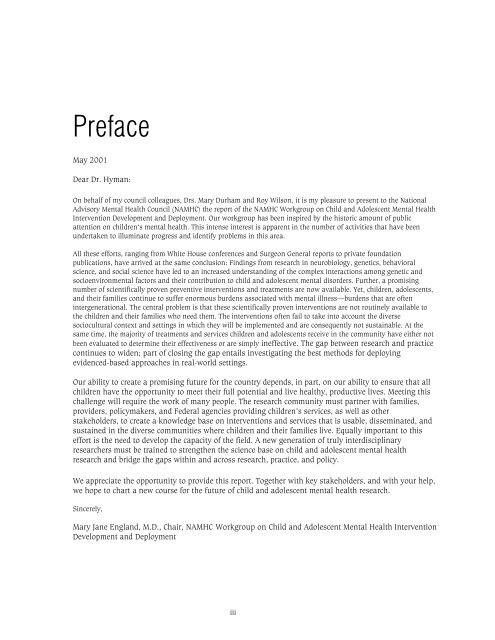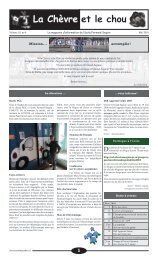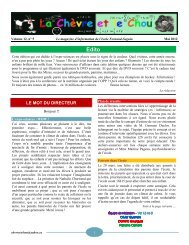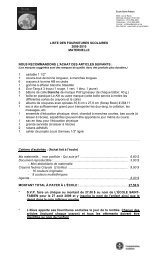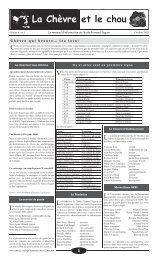Research on Child and Adolescent Mental Health
Research on Child and Adolescent Mental Health
Research on Child and Adolescent Mental Health
Create successful ePaper yourself
Turn your PDF publications into a flip-book with our unique Google optimized e-Paper software.
Preface<br />
May 2001<br />
Dear Dr. Hyman:<br />
On behalf of my council colleagues, Drs. Mary Durham <strong>and</strong> Roy Wils<strong>on</strong>, it is my pleasure to present to the Nati<strong>on</strong>al<br />
Advisory <strong>Mental</strong> <strong>Health</strong> Council (NAMHC) the report of the NAMHC Workgroup <strong>on</strong> <strong>Child</strong> <strong>and</strong> <strong>Adolescent</strong> <strong>Mental</strong> <strong>Health</strong><br />
Interventi<strong>on</strong> Development <strong>and</strong> Deployment. Our workgroup has been inspired by the historic amount of public<br />
attenti<strong>on</strong> <strong>on</strong> children’s mental health. This intense interest is apparent in the number of activities that have been<br />
undertaken to illuminate progress <strong>and</strong> identify problems in this area.<br />
All these efforts, ranging from White House c<strong>on</strong>ferences <strong>and</strong> Surge<strong>on</strong> General reports to private foundati<strong>on</strong><br />
publicati<strong>on</strong>s, have arrived at the same c<strong>on</strong>clusi<strong>on</strong>: Findings from research in neurobiology, genetics, behavioral<br />
science, <strong>and</strong> social science have led to an increased underst<strong>and</strong>ing of the complex interacti<strong>on</strong>s am<strong>on</strong>g genetic <strong>and</strong><br />
socioenvir<strong>on</strong>mental factors <strong>and</strong> their c<strong>on</strong>tributi<strong>on</strong> to child <strong>and</strong> adolescent mental disorders. Further, a promising<br />
number of scientifically proven preventive interventi<strong>on</strong>s <strong>and</strong> treatments are now available. Yet, children, adolescents,<br />
<strong>and</strong> their families c<strong>on</strong>tinue to suffer enormous burdens associated with mental illness—burdens that are often<br />
intergenerati<strong>on</strong>al. The central problem is that these scientifically proven interventi<strong>on</strong>s are not routinely available to<br />
the children <strong>and</strong> their families who need them. The interventi<strong>on</strong>s often fail to take into account the diverse<br />
sociocultural c<strong>on</strong>text <strong>and</strong> settings in which they will be implemented <strong>and</strong> are c<strong>on</strong>sequently not sustainable. At the<br />
same time, the majority of treatments <strong>and</strong> services children <strong>and</strong> adolescents receive in the community have either not<br />
been evaluated to determine their effectiveness or are simply ineffective. The gap between research <strong>and</strong> practice<br />
c<strong>on</strong>tinues to widen; part of closing the gap entails investigating the best methods for deploying<br />
evidenced-based approaches in real-world settings.<br />
Our ability to create a promising future for the country depends, in part, <strong>on</strong> our ability to ensure that all<br />
children have the opportunity to meet their full potential <strong>and</strong> live healthy, productive lives. Meeting this<br />
challenge will require the work of many people. The research community must partner with families,<br />
providers, policymakers, <strong>and</strong> Federal agencies providing children’s services, as well as other<br />
stakeholders, to create a knowledge base <strong>on</strong> interventi<strong>on</strong>s <strong>and</strong> services that is usable, disseminated, <strong>and</strong><br />
sustained in the diverse communities where children <strong>and</strong> their families live. Equally important to this<br />
effort is the need to develop the capacity of the field. A new generati<strong>on</strong> of truly interdisciplinary<br />
researchers must be trained to strengthen the science base <strong>on</strong> child <strong>and</strong> adolescent mental health<br />
research <strong>and</strong> bridge the gaps within <strong>and</strong> across research, practice, <strong>and</strong> policy.<br />
We appreciate the opportunity to provide this report. Together with key stakeholders, <strong>and</strong> with your help,<br />
we hope to chart a new course for the future of child <strong>and</strong> adolescent mental health research.<br />
Sincerely,<br />
Mary Jane Engl<strong>and</strong>, M.D., Chair, NAMHC Workgroup <strong>on</strong> <strong>Child</strong> <strong>and</strong> <strong>Adolescent</strong> <strong>Mental</strong> <strong>Health</strong> Interventi<strong>on</strong><br />
Development <strong>and</strong> Deployment<br />
iii


